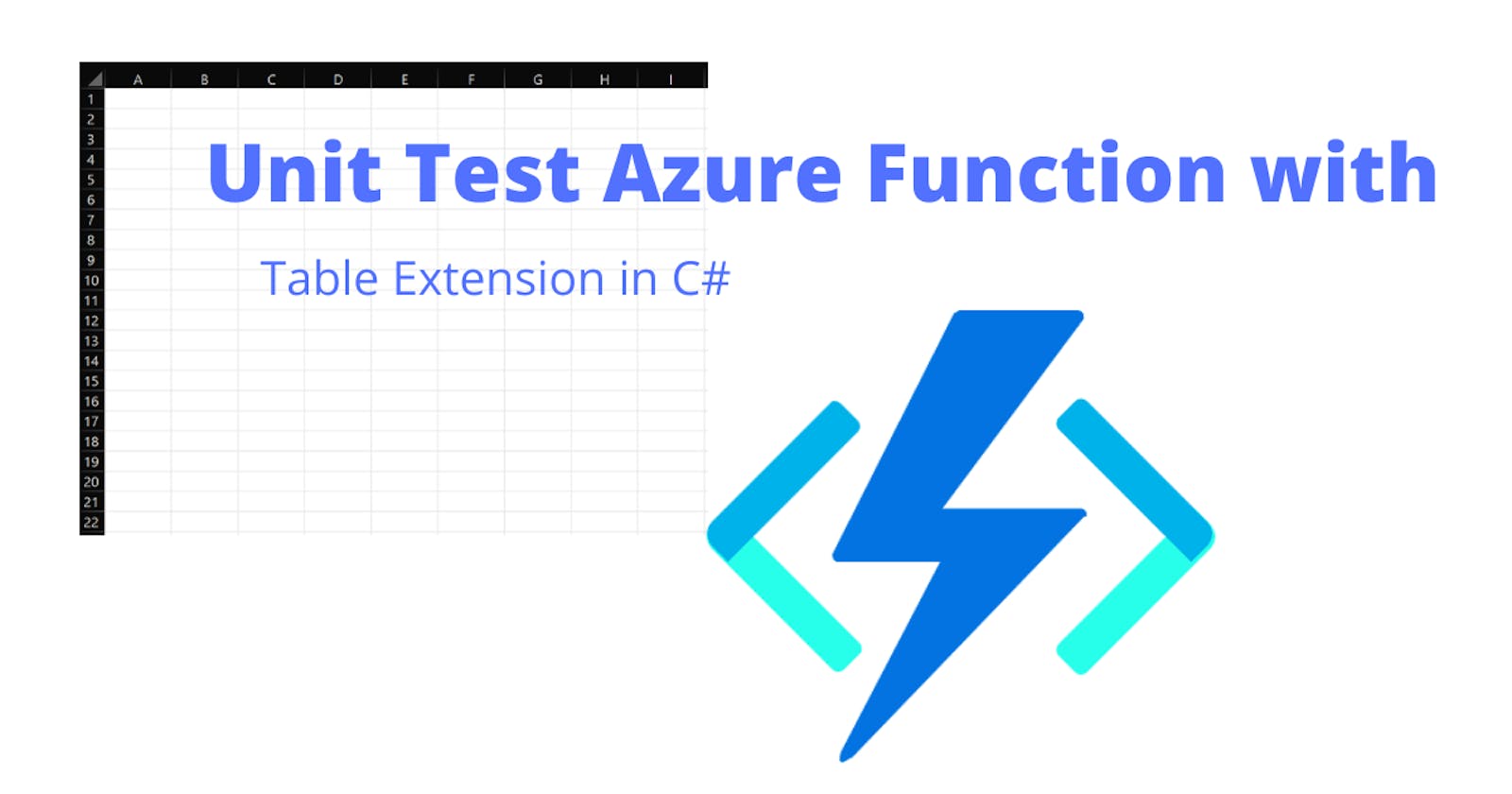Table of Contents
The new webjobs extensions can be used for Azure Table Storage CRUD operations with Azure Functions:
Add nuget package to your Azure Function
nuget.org: Microsoft.Azure.WebJobs.Extensions.Tables
dotnet add package Microsoft.Azure.WebJobs.Extensions.Tables
Please find the complete code at
https://github.com/MarkusMeyer13/azure.functions.tables
1 Functions
Using the TableClient is straight forward.
AddEntityAsync
TableEntity with TableClient:
[FunctionName("Add")]
public static async Task<IActionResult> AddAsync(
[HttpTrigger(AuthorizationLevel.Function, "post", Route = "sample")] HttpRequest req,
[Table("Sample", Connection = "SampleTableConnection")] TableClient client,
ILogger log)
{
var body = await req.ReadAsStringAsync().ConfigureAwait(false);
var data = JObject.Parse(body);
var entity = new TableEntity(data["Country"].Value<string>(), data["Company"].Value<string>())
{
["Description"] = data["Description"].Value<string>()
};
var result = await client.AddEntityAsync(entity).ConfigureAwait(false);
log.LogInformation($"Add - added");
return new NoContentResult();
}
Request-Body:
{
"Country": "Germany",
"Company": "Lorem",
"Description": "Ipsum"
}
DeleteEntityAsync
TableEntity with PartitionKey, RowKey and TableClient:
[FunctionName("Delete")]
public static async Task<IActionResult> DeleteAsync(
[HttpTrigger(AuthorizationLevel.Function, "delete", Route = "sample/{partitionKey}/{rowKey}")] HttpRequest req,
[Table("Sample", Connection = "SampleTableConnection")] TableClient client,
string partitionKey,
string rowKey,
ILogger log)
{
var result = await client.DeleteEntityAsync(partitionKey, rowKey).ConfigureAwait(false);
log.LogInformation($"Delete - StatusCode: {result.Status}");
log.LogInformation($"Delete - Content: {result.Content}");
if (result.Status.Equals(404))
{
log.LogInformation($"Delete - not found");
return new NotFoundResult();
}
log.LogInformation($"Delete - deleted");
return new NoContentResult();
}
2 Unit Tests
The TableClient and the Azure.Response are mocked:
var mockResponse = new Mock<Azure.Response>();
mockResponse.SetupGet(x => x.Status).Returns((int)HttpStatusCode.NotFound);
mockResponse.SetupGet(x => x.Content).Returns(BinaryData.FromString("{\"odata.error\":{\"code\":\"ResourceNotFound\",\"message\":{\"lang\":\"en-US\",\"value\":\"The specified resource does not exist.\\nRequestId:19ab49c9-2002-001c-145f-7d77db000000\\nTime:2022-06-11T06:47:53.2893442Z\"}}}"));
Mock<TableClient> tableClient = new Mock<TableClient>();
tableClient.Setup(_ => _.DeleteEntityAsync(It.IsAny<string>(), It.IsAny<string>(), default, default))
.ReturnsAsync(mockResponse.Object);
DeleteEntityAsync returns
- StatusCode:
404 - Content:
{"odata.error":{"code":"ResourceNotFound","message":{"lang":"en-US","value":"The specified resource does not exist.\nRequestId:19ab49c9-2002-001c-145f-7d77db000000\nTime:2022-06-11T06:47:53.2893442Z"}}}
if the entity is not found.
DeleteEntityAsync returns no content
- StatusCode:
204 - Content:
if the entity is found.
